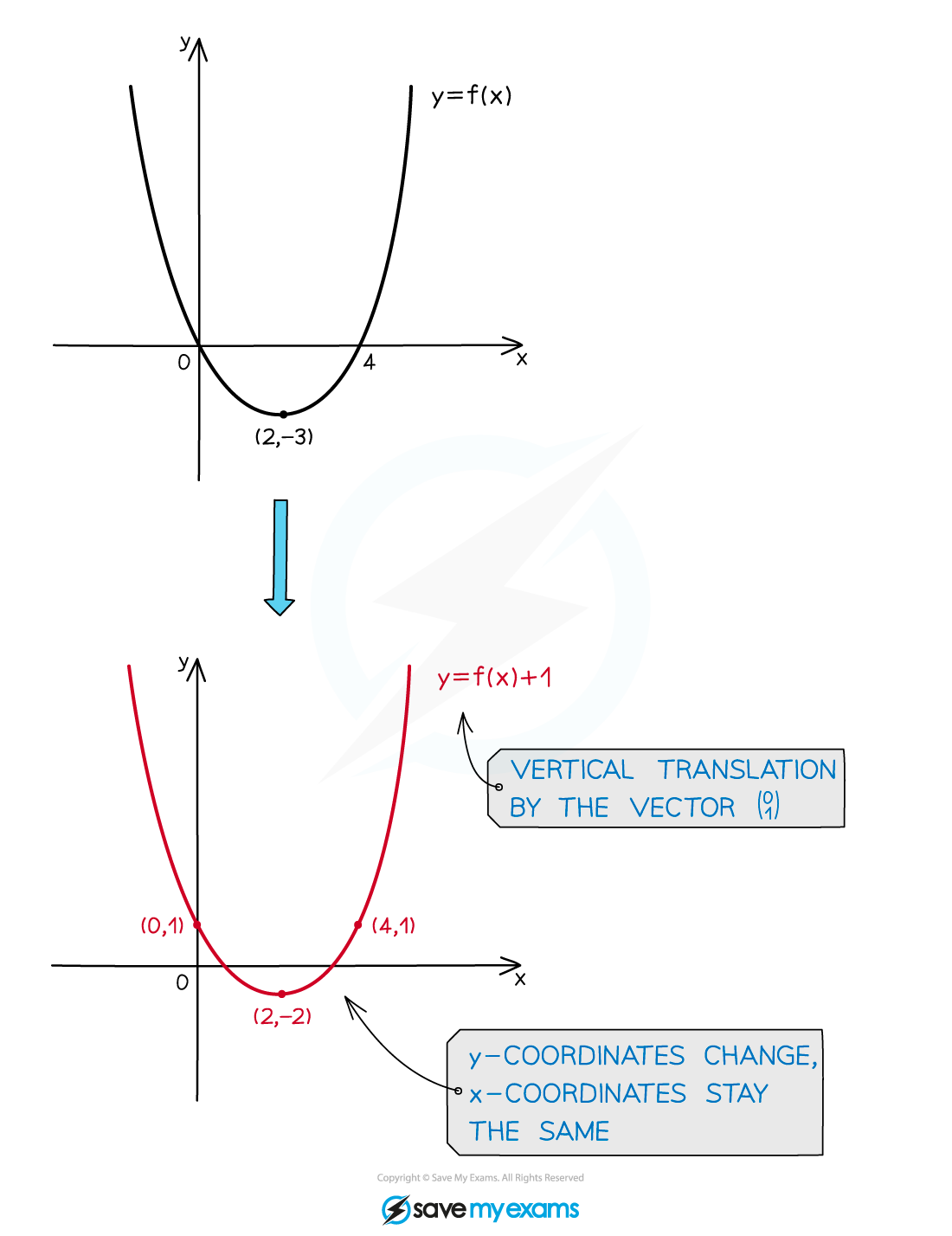Translations of Graphs (Edexcel GCSE Maths) : Revision Note
Did this video help you?
Translations of Graphs
What are translations of graphs?
The equation of a graph can be changed in certain ways
This has an effect on the graph
How a graph changes is called a graph transformation
A translation is a type of graph transformation that shifts (moves) a graph (up or down, left or right) in the xy plane
The shape, size, and orientation of the graph remain unchanged

A particular translation is specified by a translation vector

How do I translate graphs?
Let
be the equation of the original graph
Vertical translations: y=f(x) + a
is a vertical translation by the vector
The graph moves up for positive values of
The graph moves down for negative values of
The x-coordinates stay the same

Horizontal translations: y=f(x + a)
is a horizontal translation by the vector
The graph moves left for positive values of
This is often the opposite direction to which people expect
The graph moves right for negative values of
The y-coordinates stay the same

What happens to asymptotes when a graph is translated?
Any asymptotes of f(x) are also translated
An asymptote parallel to the direction of translation will not be affected

How does a translation affect the equation of the graph?
For a horizontal translation
of the graph
is subtracted from
throughout the equation
Every instance of
in the equation is replaced with
E.g. the graph
undergoes a translation of 6 units to the right
becomes
is replaced throughout the equation by
is the new equation
The equation can be left in this form or expanded and simplified
For a vertical translation
of the graph
is added to the equation as a whole
E.g. the graph
undergoes a translation of 5 units down
becomes
5 is subtracted from the equation as a whole
The equation can be left in this form or simplified
How do I apply a combined translation?
For a horizontal translation of
units and vertical translation of
units combined
becomes
E.g. the graph
undergoes a translation of 2 units up and 1 unit to the left
will become
is replaced throughout the equation by
2 is added to the equation as a whole

Note that when the equation is in the form
the vertex is
the value of
does not affect the vertex coordinates
Worked Example
The diagram below shows the graph of .

Sketch the graph of .
The transformation of the graph is a horizontal translation with vector (3 units to the left)
The x-coordinates of the points change (subtract 3 from each)
The y-coordinates of the points stay the same


You've read 0 of your 5 free revision notes this week
Sign up now. It’s free!
Did this page help you?

